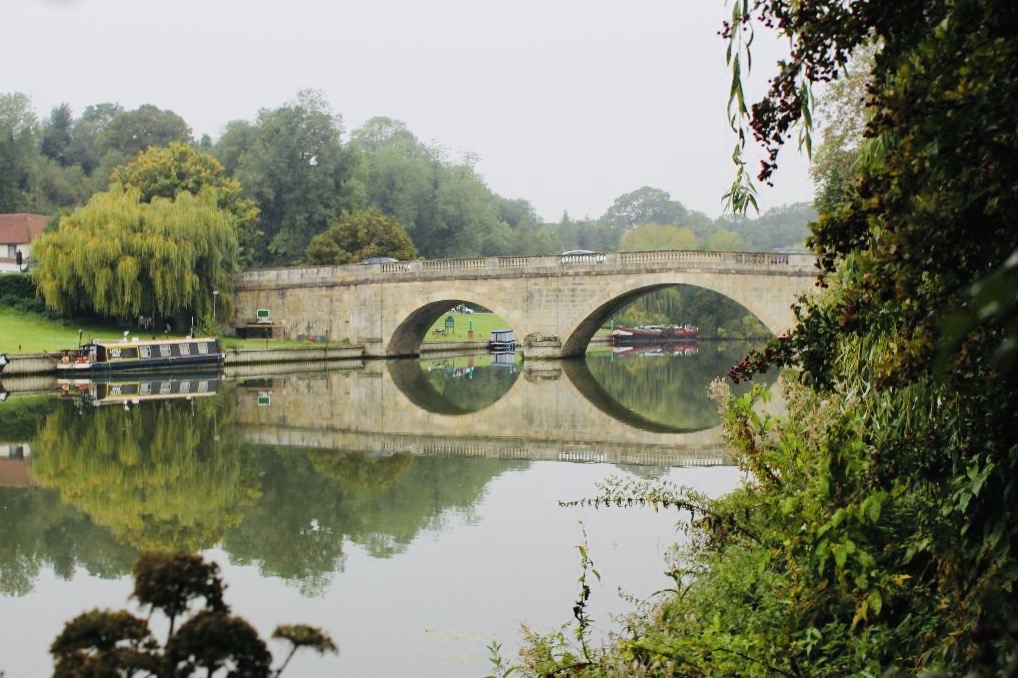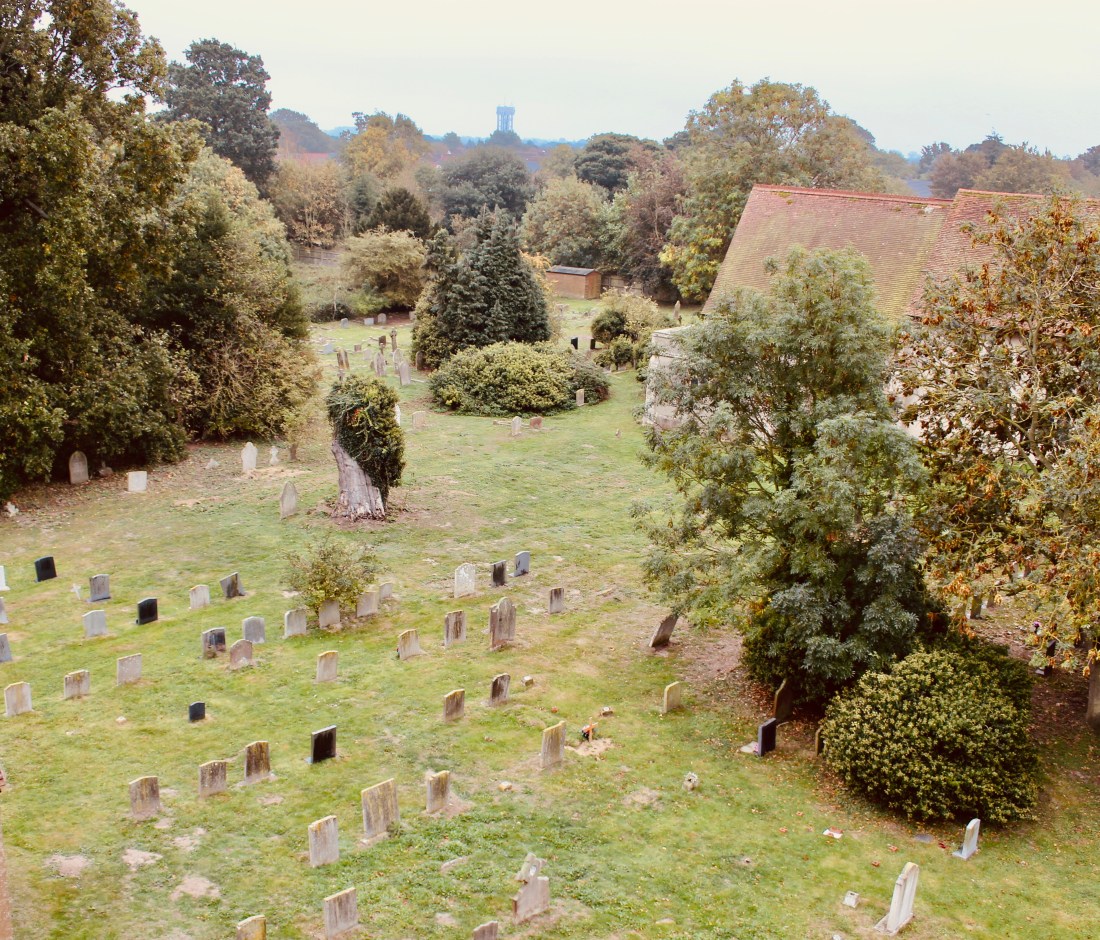 Sue Biddle in 2009
Sue Biddle in 2009
A fortnight ago, before the world became something unfamiliar to us all, Sue Biddle cycled round to see me with the aim of discussing one of her longstanding projects. Some years back I met Sue in the Ipswich Branch of Suffolk Record Office, one dull Saturday morning when she was engaged with one of her many family history projects. Our short encounter resulted in an exchange of emails and so an informal contact was established. I was the fortunate recipient of a CD containing her photos of Trimley St. Martin Church Graveyard, which when combined with a map of the Graveyard, courtesy of Andrew King, the Churchwarden, has proved more than invaluable. I finally reached the point when it seemed timely to interview Sue about her project and other interests and after bribing her with cake, we arranged to meet.
It transpired we have more than one meeting point. Sue was born in Norwich in 1947 but moved to Walton when she was just two years old. As a former Walton resident, albeit in the Nineteen seventies, I agreed with her it was a great place to live. Historically, it is the older community, when Felixstowe ‘s principle claim to fame was the Priory. Until the late twentieth community it was a self-contained community boasting a range of excellent shops, including Keeble’s the Butcher’s and indeed, it still faces the world with a good range of shops.
Sue went first to Maidstone Infants and then graduated to Causton Junior School, when Mr. Eric Pryke was the Head Teacher of the latter. Sue was taught by Peter Baylish, whom she described as amazing teacher. Lessons were fun despite the enormous class size of forty six pupils. It was probably Peter Baylish who first introduced her to history and helped ignite an interest in everything that came before her time. Her childhood was similar to thousands of others, growing up when children could freely roam the streets and fields at their own pace; the only stricture was to be back in time for Dinner. Older children would look after the younger ones and one of their destinations was the Cemetery, described by the young Sue as ‘lovely gardens”. After Causton, Sue went to Felixstowe Secondary Modern School, latterly known as Orwell High School, and when the time came for her to leave school she signed up for two years pre-nursing training at Suffolk College. Unfortunately, a traffic accident just before she was seventeen resulted in two months in hospital. After this, Sue decided nursing was not for her and she left the course. This was followed by a spell of working in Cole’s the Chemists in Felixstowe as a dispensing pharmacist and then she married Robin whom she had known ‘forever’. After the birth of her daughter a series of jobs followed. Sue became involved with ‘Auntie Bridget’s’ Playgroup and then worked as a home help. As her daughter became older, Sue moved into a different arena working for Kitty Moss at the Post Office before finding work at the Vets in Ranelagh Road. This proved to be the most interesting part of her working life. All the clients were delightful and there were many favourites but the one who held a special place in Sue’s memory was a white Staffy called Chloë, who had an argument with a train. Because of this, the little dog was kept in the practice for a couple of days, suffering physically and emotionally and as Sue soothed her, a bond was forged so that forever afterwards whenever Sue appeared in the Chloe’s vision, she would bound over to renew the friendship.
It was during this period, Sue began to grow and consolidate her interest in personal family history. Some twenty five or so years ago she fell into contact with a cousin who was looking for information about her Grandparents and Great Grandparents. The Cousin had done considerable family history in the days before digital resources and was happy to take them on a tour of Warborough, showing Sue the house of her Great Grandfather, who had asked to be buried near to the church bells, which was to prove the case. Sue was introduced to the churchyard of the parish Church of St. Lawrence where she was astounded to see many headstones engraved with her maiden name of Absalom. In truth, the place was thick with the surname, which is a great name for research under any circumstances. Sue had another cousin who had access to the Libraries of some of the Oxford Colleges. This was to prove another rich source of material about the family. Sue told me,
“If two of us cousins are in contact the third is called ‘our dreadful cousin’, it’s just a family joke, so all three of us have that title (many times!) at some point.”
By this time, Sue was captivated. Her daughter had left home in 1990 and her free time was her own, leaving her able to undertake her own research in 1997 and thus she continues to this day. At a certain point she started to work on her husband Robin’s family, solid Suffolk residents who can be traced back to at least the late sixteen hundreds.
 Crossing the Thames, the Bridge at Shillingford. Shillingford is a hamlet in the parish of Warborough, the area where many of Sue’s family originated.
Crossing the Thames, the Bridge at Shillingford. Shillingford is a hamlet in the parish of Warborough, the area where many of Sue’s family originated.
But when did the Graveyard research take off, I wondered? As Sue approached retirement, some ten years later in 2007, she came across the Gravestone Resource Project, established by Charles Sale in 1998[i], and she decided to go for it, thereby generating hundreds of hours of happy and gainful activity. Her first choice was Wantisden, a place in the middle of the triangle formed by Rendlesham, Tunstall and Butley. It was a good choice for a starter exercise, for although the church was locked, there were only about half a dozen headstones in the church yard. The process then extended itself to most of the seaward side of the A12, although not as far as the northerly parts of the county, some of which is now in Norfolk[ii]. Westleton was more or less the furthest parish she and Robin visited, one of personal significance. The two Trimleys are included on the website and if, for example, you type in the name Samuel Ralph, you will retrieve an image of his headstone. (Samuel Ralph was one of the occupants of Grimston Hall.)
Between them Sue and Robin photographed every headstone in the graveyards they visited. They usually had lunch in a decent pub, one of which was the Greyhound at Pettistree. When they returned home, they would name the photographs and then transcribe the details onto an Excel spreadsheet. The format used was one Charles Sale had created and should you view the website you should find all of the data has consistent entries. Since Sue became involved in this, she has observed a rapid deterioration in the physical condition of the headstones. Legibility is diminishing and soon, the only documentation may be those on the Gravestone Resource Project website. Sue does maintain her own records on an external hard drive. Paper is in many ways the best resource but it is very expensive, especially when the cost of printer ink is factored in[iii]. The project continued for several years and in all Sue has contributed about a hundred and sixty parishes to the project. In addition, she has covered the majority of Ipswich Cemetery and those of Woodbridge, both old and new. Eventually, Sue’s contribution ceased not through lack of interest but because of the exigencies of increasing age, although Sue shows all the aspects of a youthful and questioning mind.
I asked Sue about her own family history research and how her records are stored. Not on paper, for the most part, but on a private Ancestry page, accessible only to those to whom she gives permission. The many thousands of hours of research needs to be preserved and perhaps for all those involved in family history, consideration needs to be given to where the research goes in the event of death. Sue’s enthusiasm for family research is undiminished, although circumstances have brought about a temporary halt, not least because of the temporary closure of Suffolk Record Office as it awaits its’ move into new quarters, ‘The Hold’ and also because the Covid 19 virus has caused the closure of the other two offices as from 16th March 2020. Doubtless, Sue will be one of the first through the new door when it opens.
 The orderly Trimley St. Martin Graveyard seen from the Church Tower. October 2018.
The orderly Trimley St. Martin Graveyard seen from the Church Tower. October 2018.
If you have any comments or would like to be part of the Trimley St. Martin project, please contact me at:
trimleystmartinrecorder@gmail.com
LR 20/03/2020
************************************************************************************
[i] https://www.gravestonephotos.com/profiles/Charles%20Sale.php
[ii] The majority of the Lothingland Deanery is now in Norfolk although the original Lothingland hundred was mainly in Suffolk until 1974.
[iii] I always print of a copy of my Blogs because paper records may yet outlive digital ones.